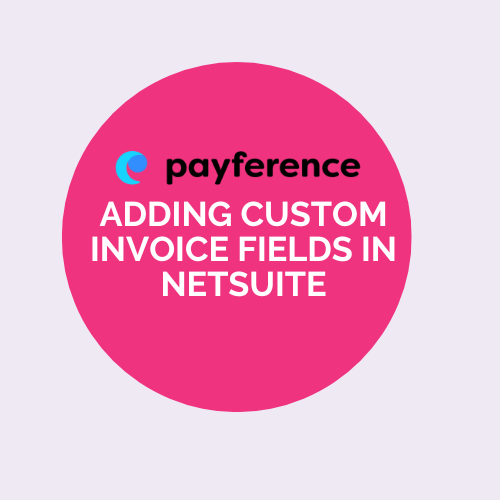Top NetSuite Accounts Receivable Automation Solutions
Are you a mid-market business looking for an AR automation solution that integrates with NetSuite?...

NetSuite is a powerful ERP that offers a range of customization options to help tailor your invoices to your specific needs. One of these options is the ability to add custom fields, which can be used to capture additional information that may be relevant to your business processes.
In this article, we’ll explore how to add custom fields to invoices in NetSuite.
Custom fields are user-defined fields that can be added to NetSuite records, including invoices. These fields can be used to capture additional data that may not be included in the standard fields provided by NetSuite. Custom fields can be of different types, including text, date, checkbox, and more.
To add custom fields to invoices in NetSuite, follow these simple steps:
Step 1: Access the Customization Menu
From the NetSuite dashboard, navigate to Customization > Lists, Records, & Fields > Entity Fields > New
This will open the Entity Fields page, where you can create new custom fields.
Step 2: Choose the Invoice record
On the Entity Fields page, select the Invoice record from the Type dropdown menu
Step 3: Create a new custom field
Click the New button to create a new custom field. This will open the New Entity Field form, where you can define the properties of the new field.
Step 4: Define the properties of the custom field
In the New Entity Field form, you can define the following properties of the custom field:
Step 5: Save the custom field
Click the Save button to save the custom field. The new field will now be available on the Invoice record.
Once you have added custom fields to invoices in NetSuite, you can use them to capture additional information that is relevant to your business processes. For example, you might use custom fields to capture the following information:
Custom fields can also be used in searches and reports, allowing you to easily filter and analyze your data based on the custom fields you have defined.
Adding custom fields to invoices in NetSuite is a simple process that can help you capture additional information that is relevant to your business processes. By defining custom fields, you can tailor your invoices to your specific needs and improve your ability to manage your business effectively. With a little bit of customization, you can create invoices that are not only accurate and professional but also reflect your unique business needs.
If you’re looking to streamline your accounts receivable processes, decrease your DSO, and make billing, collections, and payment acceptance easier with a cutting-edge AI-based solution seamlessly integrated with NetSuite, check out Payference.
Are you a mid-market business looking for an AR automation solution that integrates with NetSuite?...
You can satisfy some NetSuite users all the time, and all NetSuite users some of the time, but you...
Finance teams deal with numbers - a lot of numbers. While the different areas within finance each...